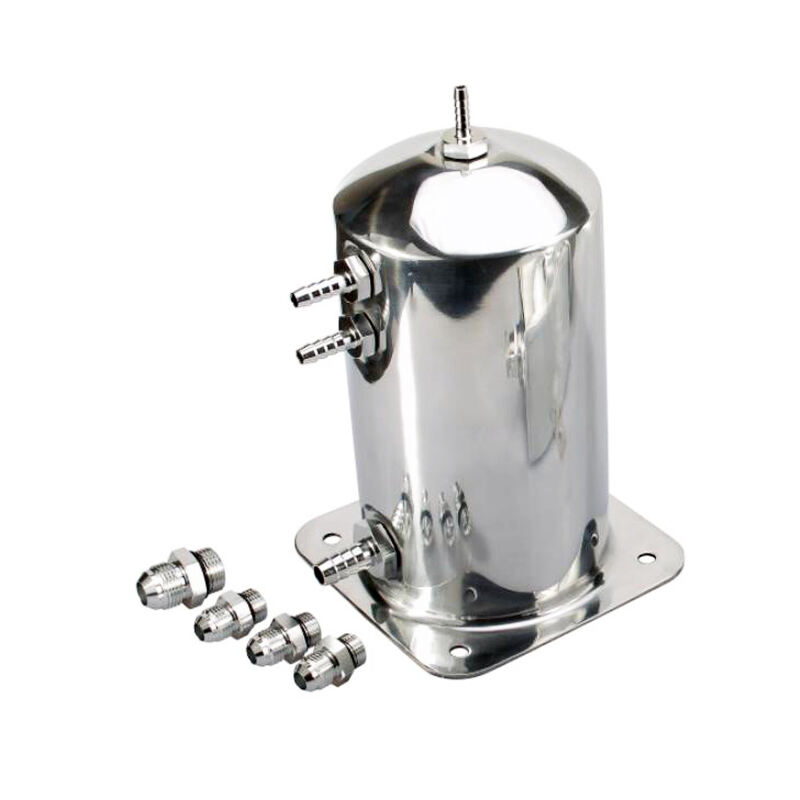AN fittings are essential components designed specifically for off-road vehicles like ATVs. These fittings are standardized connectors that ensure seamless integration within various vehicle systems. Typically, they play a critical role in connecting hoses and pipes, facilitating lubrication, and managing fuel delivery systems. By providing robust connections, AN fittings are integral to the safety and reliability of ATVs, helping to withstand the rigors of off-road conditions. Reliable connections ensure that the vehicle operates efficiently without risk of leaks or disconnection, which is vital for maintaining performance during demanding off-road maneuvers.
The efficiency of an ATV's fuel delivery system is paramount for optimal performance, and AN fittings are central in enhancing this efficiency. High-quality fittings ensure that fuel is delivered smoothly and consistently, reducing the risk of power interruptions that can occur with subpar fittings. Furthermore, AN fittings also play a crucial role in maintaining brake line integrity. Inferior fittings can lead to leaks or loose connections, compromising braking performance and potentially causing dangerous situations. Case studies and expert opinions often highlight improved fuel delivery and reliable brake performance when quality AN fittings are employed, asserting their importance in avoiding performance failures.
Research consistently shows a strong connection between the quality of AN fittings and engine longevity. High-grade fittings prevent leaks and failures that can lead to costly engine repairs or even total engine failure. Leaks in fuel or lubrication systems, often caused by poor fitting quality, can significantly accelerate engine wear and lead to malfunction. Statistical data reinforces that many engine problems are directly attributed to inferior fittings, emphasizing the need for durable and well-manufactured AN components in off-road vehicles. The investment in quality fittings is therefore a proactive approach to ensuring long-term engine health and reducing maintenance costs.
When selecting AN fittings for your ATV, understanding the difference between aluminum and stainless steel options is crucial. Aluminum fittings are lightweight, which can be beneficial in racing and performance applications. However, they may lack the corrosion resistance offered by stainless steel fittings, which are more durable in harsh conditions. In off-road scenarios where exposure to elements is frequent, stainless steel is often recommended for its superior resistance to wear and corrosion. Expert recommendations suggest considering the specific conditions your ATV will face when choosing between these materials.
Choosing the right size AN fittings for fuel lines and brake systems is essential for optimal ATV performance. Typically, AN fittings are sized according to their dash size (e.g., -6 AN), which corresponds to the size of the hose or component. Utilizing a conversion chart can help determine the exact measurements needed. Ensuring the proper fitting size is crucial, as it helps prevent fuel delivery issues and maintains brake effectiveness, which are critical for safety and performance. By accurately measuring and applying the correct fittings, riders can avoid potential malfunctions.
Selecting AN fittings compatible with inline fuel filters is vital for maintaining fuel system integrity. Incompatible fittings can obstruct fuel flow, cause leaks, or damage the filter itself. To avoid these issues, it's important to evaluate the specifications of both the filters and fittings to ensure they align. Also, consider advice from ATV experts and manufacturers on integrating new fittings with existing fuel systems. This evaluation ensures a seamless connection, preserving optimal fuel efficiency and system reliability.
Having a reliable set of AN wrenches is essential for efficient assembly and maintenance of ATV fittings. These wrenches are precision-engineered to fit perfectly with all hose end assemblies and adapter fittings, ensuring a secure and leak-free connection. The robust construction of these tools not only enhances durability but also prevents damage to fittings during installation. Many users have lauded the AN Wrenches Sets (7 PCS) for their ease of use and the effectiveness in minimizing fitting damage, thereby expediting maintenance tasks.

An aluminum surge tank is a vital component in an ATV’s fuel system, designed to manage fuel delivery efficiently under various conditions. Constructed from 6061 aluminum and fully tig welded, these tanks replace the failure-prone plastic molded tanks, providing increased reliability and performance. The Aluminum Surge Tank holds 1.5 liters of fluid and features a low-profile cap for easy refilling. By preventing fuel starvation during high-demand scenarios, it enhances overall performance and potential horsepower gains, making it invaluable for serious ATV enthusiasts.

The standard fuel surge tank plays a critical role in maintaining consistent fuel levels, crucial for uninterrupted ATV performance. Constructed similarly to its aluminum counterpart, these tanks ensure a steady fuel supply during extreme conditions. Selecting the right surge tank suited to specific ATV models can significantly enhance performance, as anecdotal evidence and user feedback suggest notable gains when properly installed. The Standard Fuel Surge Tank not only maintains optimal fuel levels but also caters to different performance needs, making it a versatile addition for ATV customization.

Proper installation of AN fittings is crucial to ensuring a leak-proof and secure connection in your ATV's fuel and brake systems. Here's a step-by-step fitting installation guide to assist you:
Following this guide will help you achieve a reliable installation and avoid common installation mistakes that can lead to costly repairs.
Leak prevention in ATV fuel and brake lines is vital for safety and performance. Here are best practices to maintain tight and secure connections:
The significance of preventing leaks cannot be overstated. Leaks in fuel and brake lines can pose environmental hazards and increase accident risks, as well as decrease the ATV’s efficiency.
Regular inspection and timely replacement of filters and fittings are essential to retaining your ATV’s optimal functionality. Here’s a guideline to help determine when replacements are necessary:
Ignoring the need for replacement can lead to costly damage and worsened ATV performance. Many users highlight significant improvements after replacing worn parts, emphasizing the reliability and increased lifespan their ATV gains when components are regularly maintained and updated.